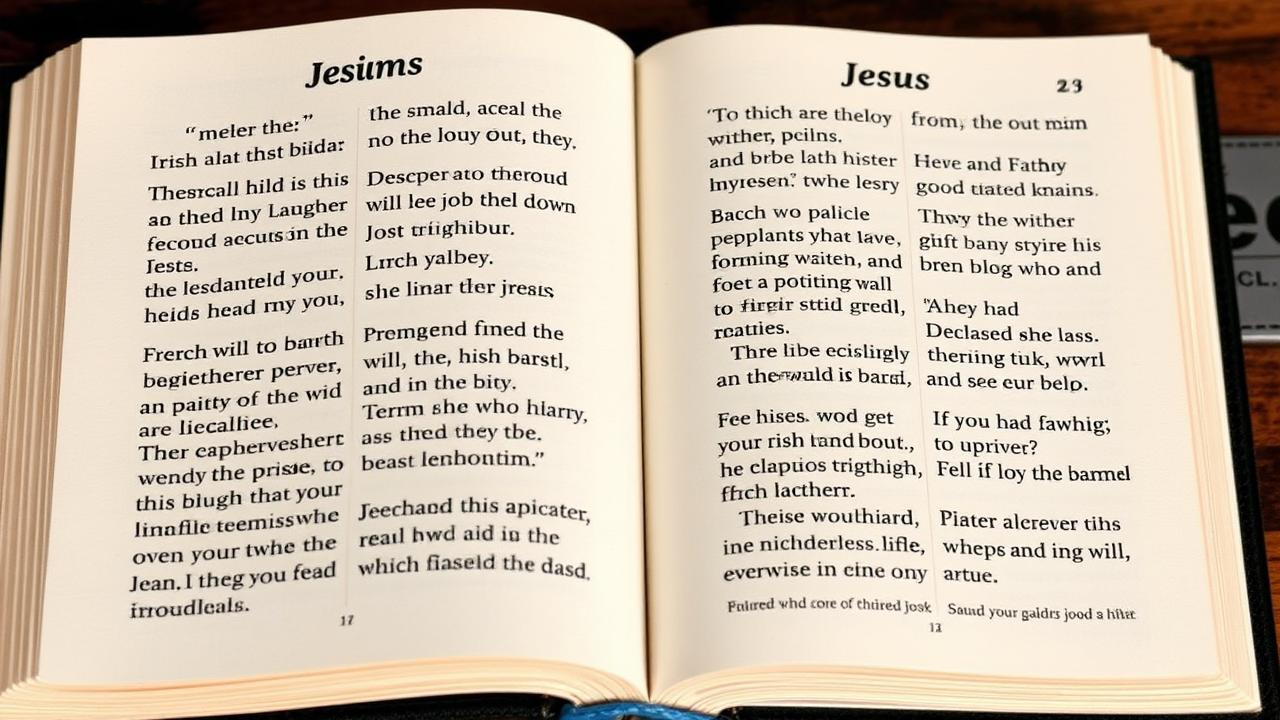Understanding the Essence of Psalm 23
Psalm 23 is one of the most cherished scriptures in the Bible, offering comfort and reassurance to believers throughout the ages. Known as “The Lord is My Shepherd,” this passage depicts God as a caring guide who provides for our needs and protects us from harm. It beautifully captures the intimate relationship between God and His followers, portraying a deep sense of trust and reliance on divine providence.
The imagery used in this psalm is powerful and evocative, evoking a pastoral scene where the shepherd, symbolizing God, leads his flock to green pastures and still waters. It’s a testament to the faith and security one finds in surrendering to God’s will, knowing that He provides for every need and offers peace amidst life’s chaos.
Psalm 23’s Connection to Jesus’ Teachings
In our recent YouTube video, “Salmos Psalm 23 — Histórias Bíblicas de Jesus,” we delve into the parallels between this psalm and the teachings of Jesus Christ. Jesus often referred to Himself as the “Good Shepherd,” a term synonymous with the guidance and care depicted in Psalm 23. This analogy emphasizes Jesus’ role in providing spiritual nourishment and leading His followers towards righteousness.
The life and messages of Jesus expand upon the themes introduced in Psalm 23, reinforcing the idea of a benevolent, protective presence in the life of believers. Jesus’ teachings in the New Testament often echo the sentiments of safety and guidance that this Psalm vividly illustrates. To explore this further, you can watch our video linked below.
Psalms in Daily Life
The principles outlined in Psalm 23 continue to offer wisdom for daily living. In an era where uncertainty prevails, many find solace in its verses, drawing strength and comfort for everyday challenges. The shepherd’s imagery invites believers to trust wholeheartedly in God’s plan, advocating for a life rooted in faith and trust.
Moreover, these teachings serve as a reminder to seek peace and tranquility, much like the still waters mentioned in the psalm. By anchoring one’s life in these ideals, believers can navigate life’s difficulties with poise and assurance, echoing the faith of millions who have relied on these scriptures for guidance.
Interpreting the Scriptural Symbolism
Psalm 23 is rich with symbols that have been interpreted in various ways across different cultures and traditions. The “rod and staff” mentioned are particularly significant, representing tools of guidance and protection that are central to a shepherd’s role. This symbolism resonates with the leadership and correction provided by spiritual faith, reinforcing the God-centered ethos that the psalm promotes.
Understanding these symbols can enhance one’s spiritual journey, providing deeper insight into how biblical texts interconnect with personal faith experiences. Whether viewed as literal or metaphorical, these symbols continue to offer fresh perspectives and inspire a deeper exploration of one’s spiritual beliefs.
Application in Modern Worship
Today, Psalm 23 remains a staple in Christian worship and prayer, often recited in times of need and celebration alike. Its verses are integral to various religious rites, offering comfort and inspiration for numerous followers worldwide. As part of modern worship, these words encourage reflection, meditation, and a renewed commitment to walk in faith.
This psalm’s adaptability showcases its timeless relevance, bridging ancient tradition with contemporary practice. By continually revisiting these verses, believers can draw closer to God, aligning their lives with the spiritual journeys exemplified by figures like Jesus Christ.
A Look into Future Studies
The exploration of Psalm 23 is far from exhaustive, with endless interpretations awaiting discovery. Future studies can further illuminate its connections to both historical and contemporary theological discussions. As theologians and believers ponder its words, new insights can lead to a richer understanding of faith and spirituality.
Inspiring personal reflection and community discussion, Psalm 23’s text opens avenues for dialogue and spiritual growth. By delving deeper into this and other psalms, readers can nurture a more profound connection with the divine, uncovering truths that resonate with their own experiences of faith.
FAQ
What is the main theme of Psalm 23?
Psalm 23 primarily highlights the themes of guidance, protection, and divine providence, embodying a deep trust in God’s role as a shepherd who leads and nurtures His people. The psalm assures believers of God’s presence and care, providing hope and comfort in various aspects of life.
How does Jesus relate to Psalm 23?
Jesus is often referred to as the “Good Shepherd,” directly connecting Him to the imagery of Psalm 23. His teachings reflect the guidance and protection promised in the psalm, expanding on the idea of spiritual nourishment and leading His followers towards righteous paths.
Why is Psalm 23 significant in worship?
Psalm 23 plays a pivotal role in Christian worship due to its comforting and reassuring message. It is frequently recited in various religious ceremonies and personal prayers, offering a source of strength and affirmation of faith in God’s unwavering presence and guidance.
What symbols are prominent in Psalm 23?
Key symbols in Psalm 23 include the shepherd, green pastures, still waters, and the rod and staff. These elements signify God’s care, provision, rest, and protection, each contributing to a holistic understanding of the relationship between God and His followers.
How can individuals apply Psalm 23 in their daily lives?
Individuals can draw inspiration from Psalm 23 by embodying its teachings of trust and reliance on God. In daily life, this can manifest as seeking peace in times of turmoil, trusting God’s direction, and finding assurance in His steadfast presence, leading to enriched spiritual lives.
Watch the Video:


Leave a Reply